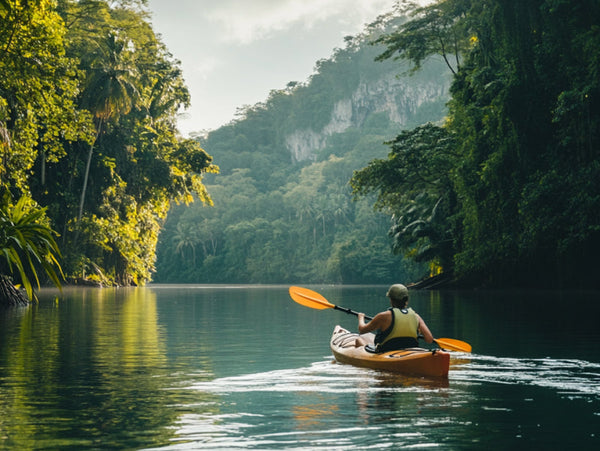Paddle Boarding for Beginners

As you can expect with any sport, there is a learning curve to SUP. After following this quick guide, you’ll have everything you need to know to paddle board like a pro.
-
Choosing Your SUP
Stand up paddle boards all have different qualities depending on what you’re wanting to use your paddle board for. When choosing your perfect board, you’ll want to test out a few if possible to get the best fit for you.
Do you want to do yoga on your paddle board? How about going down rivers? What you plan on using your board for and what kind of water you’ll be on determines what kind of board you’ll need.
Most beginners will want a board that is thick, wide, and long. You’ll have a larger surface area to balance on when you find a board that’s larger than most. If you try a board out and can’t balance on it, you’ll need to find something larger and eventually work your way down to something smaller.
-
What to Bring on Board
The beauty of paddle boarding is that you can bring anything on board with you. From an anchor to a fishing rod, or your lovable pet dog, the possibilities are endless.
No matter what activity you’re doing, you’ll want to make sure you have a flotation device and a paddle board leash. The flotation device will keep you above water and the leash will keep your board tethered to you just in case you call offboard.
-
Choosing Your Paddle
Your paddle board paddle should be much longer and should have a different shaped head than what you’d use if you were to go kayaking. The perfect paddle should go up to your wrist when you reach your full arm above your head.
The head of the paddle should be teardrop shaped; this will give you the most momentum possible when you propel yourself forward in the water.
-
How to Stand
When balancing on your paddle board, you may be tempted to take a surfing stance. You won’t want to do this, as you’ll have a hard time paddling and will be much more likely to fall off.
When you stand, you’ll want to make sure that your feet are parallel to each other and that they’re facing the front of your board. Keep them at about hip distance apart to stay balanced as you move through the water.
-
SUP Strokes 101
To hold the paddle correctly, you’ll want to have one hand toward the top of the paddle and one hand toward the middle. If you’re paddling on the right side, keep your left hand on top; if you switch to paddle on the left side, make sure your right hand is on top.
The teardrop shape of the paddle should angle away from you as you paddle yourself forward. To go forward, paddle from front to back. To slow down, paddle from back to front. To turn, stroke in a half circle toward the direction you’d like to travel in.
With a bit of time and practice, you’ll be on your way to mastering the art of paddle boarding. If you fall off your SUP, no worries; paddle boarding is a water sport for a reason.
=====
- What to Bring Paddle Boarding
When you stand up paddle board (SUP), there may not seem like a lot of extra room up top to actually carry anything with you. However, there are a few essentials you’ll need to bring on the water to stay safe and to make the most of your water sport experience.
Here are a few things you’ll need to bring paddle boarding:
-
Paddle Board
To go paddle boarding, you’ll need a paddle board. This one is pretty self explanatory, but it’s as a necessity, it made the list.
If you have fins on your paddle board, you’ll want to make sure that you pack those with you to attach when you reach the water, too.
-
Paddle Board Paddle
The second most important part of paddle boarding is none other than the paddle. These paddles are a bit different than kayak or canoe paddles, so you’ll want to make sure you have the correct equipment with you before heading to sea.
Your paddle should be teardrop shaped and be as tall as your wrist when you have your arm extended above your head.
-
Leash
A SUP leash is an absolute necessity when on your board. The leash is a cord that connects you to your paddle board, so if you fall off, your board won’t be whisked away from you.
There are dozens of different kinds of leashes, all optimized for a different kind of water. If you’re in the ocean, you’ll need a stronger leash than if you were paddle boarding across a calm lake.
Your leash should be either the length of or shorter than your paddle board. This ensures that you’ll be able to get back up quickly if you fall down.
-
Personal Flotation Device
No matter your skill level, you’ll want to wear a personal flotation device (PFD) at all times on the water. Accidents happen and the PFD will make sure you’re safe if you fall.
-
Suitable Clothing
Depending on what time of year it is, you’ll want clothing that either dries quickly or that insulates you.
For warmer months, anything that dries quickly is ideal. You may also want to wear a hat to protect your head and eyes from the sun.
For cooler months, your clothes should be there to keep you warm. Wearing neoprene clothing or a wetsuit is the only way to go.
-
Sun Protection
Whether it’s a hot 100 degrees or a cool 55, the sun will always be out. Even if you don’t feel the warm rays on your skin, you can easily get burned if you spend time outside. Sunscreen or a hat is always a necessity.
-
BEST Kayak Anchor
If you’ll be stopping on the water, you’ll want to bring along your BEST kayak anchor to keep your paddle board in place while you take pictures, do yoga, or take a quick swim.
-
Pump for Inflatable SUP
If you have an inflatable SUP or an inflatable fin, you’ll need to bring a pump with you.
You’ll want to check the pressure of your SUP before heading out on the water. If you feel any changes while you’re out there, you’ll need to come back to shore as soon as possible to see if air needs to be added.
Paddle boarding doesn’t require many accessories to get you started, which makes it an easy one for beginners to pick up. If you have these 8 items, you’re ready to go. Get out on the water, try something new, and have fun.
Leave a comment
Comments will be approved before showing up.
Also in Blog

How to Choose the Right Kayak Anchor
Choosing the right kayak anchor can make all the difference when it comes to staying steady on the water. This guide walks you through everything you need to know about selecting the perfect folding kayak anchor

What To Do When Your Kayak Capsizes
Although kayaks are designed for stability no matter the conditions, accidents happen and knowing what to do can help you avoid an unpleasant experience. Preparedness and technique are key components to controlling a sometimes scary situation.


